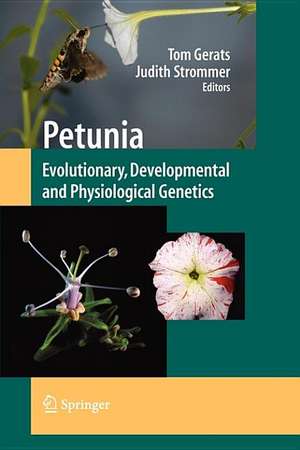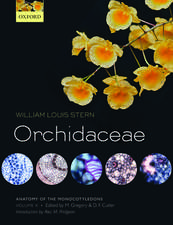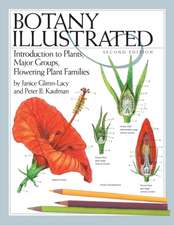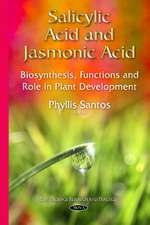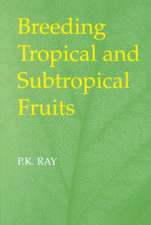Petunia: Evolutionary, Developmental and Physiological Genetics
Editat de Tom Gerats, Judy Strommeren Limba Engleză Paperback – 23 noi 2010
Petunia thus has been a commercially important ornamental since the early days of horticulture. Despite that, Petunia was in use as a research model only parsimoniously until the late fifties of the last century. By then seed companies started to fund academic research, initially with the main aim to develop new color varieties. Besides a moment of glory around 1980 (being elected a promising model system, just prior to the Arabidopsis boom), Petunia has long been a system in the shadow. Up to the early eighties no more then five groups developed classical and biochemical genetics, almost exclusively on flower color genes. Then from the early eighties onward, interest has slowly been growing and nowadays some 20-25 academic groups around the world are using Petunia as their main model system for a variety of research purposes, while a number of smaller and larger companies are developing further new varieties.
At present the system is gaining credibility for a number of reasons, a very important one being that it is now generally realized that only comparative biology will reveal the real roots of evolutionary development of processes like pollination syndromes, floral development, scent emission, seed survival strategies and the like.
As a system to work with, Petunia combines advantages from several other model species: it is easy to grow, sets abundant seeds,while self- and cross pollination is easy; its lifecycle is four months from seed to seed; plants can be grown very densely, in 1 cm2 plugs and can be rescued easily upon flowering, which makes even huge selection plots easy to handle. Its flowers (and indeed leaves) are relatively large and thus obtaining biochemical samples is no problem. Moreover, transformation and regeneration from leaf disc or protoplast are long established and easy-to-perform procedures. On top of this easiness in culture, Petunia harbors an endogenous, very active transposable element system, which is being used to great advantage in both forward and reverse genetics screens.
The virtues of Petunia as a model system have only partly been highlighted. In a first monograph, edited by K. Sink and published in 1984, the emphasis was mainly on taxonomy, morphology, classical and biochemical genetics, cytogenetics, physiology and a number of topical subjects. At that time, little molecular data was available. Taking into account that that first monograph will be offered electronically as a supplement in this upcoming edition, we would like to put the overall emphasis for the second edition on molecular developments and on comparative issues.
To this end we propose the underneath set up, where chapters will be brief and topical. Each chapter will present the historical setting of its subject, the comparison with other systems (if available) and the unique progress as made in Petunia. We expect that the second edition of the Petunia monograph will draw a broad readership both in academia and industry and hope that it will contribute to a further expansion in research on this wonderful Solanaceae.
| Toate formatele și edițiile | Preț | Express |
|---|---|---|
| Paperback (1) | 798.22 lei 38-44 zile | |
| Springer – 23 noi 2010 | 798.22 lei 38-44 zile | |
| Hardback (1) | 961.55 lei 6-8 săpt. | |
| Springer – 8 ian 2009 | 961.55 lei 6-8 săpt. |
Preț: 798.22 lei
Preț vechi: 1050.29 lei
-24% Nou
Puncte Express: 1197
Preț estimativ în valută:
152.76€ • 165.87$ • 128.32£
152.76€ • 165.87$ • 128.32£
Carte tipărită la comandă
Livrare economică 18-24 aprilie
Preluare comenzi: 021 569.72.76
Specificații
ISBN-13: 9781441927378
ISBN-10: 1441927379
Pagini: 468
Ilustrații: XXI, 445 p.
Dimensiuni: 155 x 235 x 25 mm
Greutate: 0.65 kg
Ediția:Softcover reprint of hardcover 2nd ed. 2009
Editura: Springer
Colecția Springer
Locul publicării:New York, NY, United States
ISBN-10: 1441927379
Pagini: 468
Ilustrații: XXI, 445 p.
Dimensiuni: 155 x 235 x 25 mm
Greutate: 0.65 kg
Ediția:Softcover reprint of hardcover 2nd ed. 2009
Editura: Springer
Colecția Springer
Locul publicării:New York, NY, United States
Public țintă
ResearchCuprins
The Genus Petunia.- Petunia as a Model System for the Genetics and Evolution of Pollination Syndromes.- Benzenoids Dominate the Fragrance of Petunia Flowers.- ADH and PDC: Key Roles for Enzymes of Alcoholic Fermentation.- Gametophytic Self-Incompatibility in Petunia.- Cytoplasmic Male Sterility and Fertility Restoration in Petunia.- Development and Function of the Arbuscular Mycorrhizal Symbiosis in Petunia.- Vegetative Branching in Petunia.- Development of the Petunia Inflorescence.- Evolution and Development of the Flower.- Combinatorial Action of Petunia MADS Box Genes and Their Protein Products.- The Role of Expansins A in Petunia Development.- The Genetics of Flower Color.- Petunia Flower Senescence.- Genetic Recombination and Mapping in Petunia.- Impact of Retroelements in Shaping the Petunia Genome.- Identification and Exploitation of Petunia Transposable Elements: A Brief History.- Virus-Induced Gene Silencing for Functional Characterization of Genes in Petunia.- Transformation and Regeneration of Petunia.- Petunia Biotechnology.
Recenzii
From the reviews of the second edition:
“The book consists of a collection of chapters written for a scientific audience that highlight various aspects of Petunia genetics. … this book is more than an update of recent research activities in the style of ‘what's new’ since many chapters provide very appreciated historical reviews of the particular field of research. This makes this book very valuable … . The book is a useful resource for scientists beginning research work on the genus Petunia … .” (Anja Geitmann, Annals of Botany, Vol. 107 (4), 2011)
“The book consists of a collection of chapters written for a scientific audience that highlight various aspects of Petunia genetics. … this book is more than an update of recent research activities in the style of ‘what's new’ since many chapters provide very appreciated historical reviews of the particular field of research. This makes this book very valuable … . The book is a useful resource for scientists beginning research work on the genus Petunia … .” (Anja Geitmann, Annals of Botany, Vol. 107 (4), 2011)
Textul de pe ultima copertă
In 1984, when the first edition of this monograph was published, Petunia was well-positioned as a classical model system to contribute significantly to the coming explosion in plant molecular biology. Its strength was fostered by years of physiological, biochemical, genetic and cytogenetic research- the contributions of early workers who saw the value and promise of this horticulturally significant representative of the Solanaceae. The present edition encapsulates the state of Petunia-based research a quarter of a century later. It paints a rich portrait of progress, particularly but not exclusively in evolutionary and developmental biology. The wealth of knowledge presented here, and the continued promise of Petunia as a research system, both follow from a combination of that solid early work, the amenability of Petunia to molecular analysis, and the dedication and collegiality of the Petunia research community. All are richly documented in this work.
Tom Gerats completed his Ph.D. on Petunia flavonoids and transposons at the University of Amsterdam (1984). He then joined the Genetics Department of the Free University (also in Amsterdam) where a group was formed, headed by Ed Veltkamp, later Jos Mol, to work on the molecular aspects of flavonoid genes. Tom moved to Marc van Montagu’s group in Ghent (Belgium) in 1990, where he continued to work on Petunia as a main system. In 2001 he obtained a chair in Plant Genetics at the Radboud University, Nijmegen. Starting with his work as an undergraduate, he has aimed throughout his career to enhance Petunia’s status as a model system for comparative research.
Judy Strommer received B.S. and M.S. degrees from the University of Chicago and a Ph.D. in Molecular Biology from UCLA. She lives with her family in Guelph, Ontario, where she is a Professor of Plant Agriculture at the University of Guelph. She was introduced to Petunia research by Tom Gerats at ameeting of the Genetics Society of America more than 20 years ago. Current research in her laboratory involves analysis of the regulation of anthocyanin production in grape and development of feed-based vaccines, but she remains a devoted fan of Petunia and the research it has inspired.
Tom Gerats completed his Ph.D. on Petunia flavonoids and transposons at the University of Amsterdam (1984). He then joined the Genetics Department of the Free University (also in Amsterdam) where a group was formed, headed by Ed Veltkamp, later Jos Mol, to work on the molecular aspects of flavonoid genes. Tom moved to Marc van Montagu’s group in Ghent (Belgium) in 1990, where he continued to work on Petunia as a main system. In 2001 he obtained a chair in Plant Genetics at the Radboud University, Nijmegen. Starting with his work as an undergraduate, he has aimed throughout his career to enhance Petunia’s status as a model system for comparative research.
Judy Strommer received B.S. and M.S. degrees from the University of Chicago and a Ph.D. in Molecular Biology from UCLA. She lives with her family in Guelph, Ontario, where she is a Professor of Plant Agriculture at the University of Guelph. She was introduced to Petunia research by Tom Gerats at ameeting of the Genetics Society of America more than 20 years ago. Current research in her laboratory involves analysis of the regulation of anthocyanin production in grape and development of feed-based vaccines, but she remains a devoted fan of Petunia and the research it has inspired.
Caracteristici
Emphasis on molecular developments and on comparative issues with petunia as a model species The only comprehensive reference on petunia that provides an overview of the fundamentals as well as the latest research Includes supplementary material: sn.pub/extras
